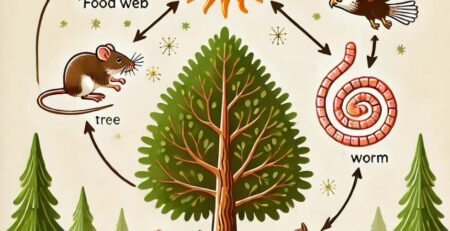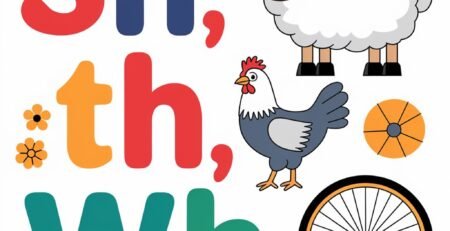16Mar
Lesson Plan > Lesson 25 > Mathematics
Elementary Level: Ordinal Numbers (First to Tenth)
Mid Level: Problem Solving with Number Operations
High Level: Multi-Step Ratio and Percentage Problems
Elementary Level (Kinder to Grade 2)

Subject: Ordinal Numbers (First to Tenth)
Alignment with Standards:
- Common Core State Standards (CCSS):
- CCSS.MATH.CONTENT.1.NBT.A.1: Count to 120, starting at any number less than 120. In this range, read and write numerals and represent a number of objects with a written numeral (builds counting skills for ordinals).
- CCSS.MATH.CONTENT.K.CC.B.4: Understand the relationship between numbers and quantities; connect counting to cardinality (extends to ordinal positions).
- CCSS.ELA-LITERACY.SL.1.1: Participate in collaborative conversations with diverse partners about grade 1 topics and texts with peers and adults in small and larger groups (used in activities).
Objectives
- Understand that ordinal numbers (first, second, third, etc.) show position or order rather than quantity.
- Recognize and use ordinal numbers from “first” to “tenth” in spoken and written forms.
- Apply ordinal numbers in line-up games and a scavenger hunt to reinforce their meaning.
- Build counting, sequencing, and listening skills through hands-on practice.
Materials
- 10 small toys or objects (e.g., blocks, cars, stuffed animals)
- Number cards (1st to 10th, written as words or abbreviations: 1st, 2nd, 3rd, etc.)
- Paper or notebook for drawing/writing
- Crayons, markers, or pencils
- Scavenger hunt list (e.g., “Find the 3rd book on the shelf”)
- Optional: Storybook with order (e.g., The Very Hungry Caterpillar by Eric Carle), a line-up mat
Activities
Day 1: Introducing Ordinal Numbers (30-45 minutes)
- Warm-Up (5-10 minutes):
- Ask: “If you’re in a race, who gets the gold medal? (First!) Today, we’re learning words for order!”
- Say: “First, second, third—these are ordinal numbers!”
- Direct Instruction (10 minutes):
- Line up 5 toys: “This car is first, this bear is second, this block is third…” Count to fifth.
- Show cards: “1st, 2nd, 3rd, 4th, 5th.” Say them together.
- Explain: “Ordinal numbers tell us ‘which one’ in line—not how many!”
- Practice (15-20 minutes):
- Read a book page (e.g., The Very Hungry Caterpillar: “On the first day…”). Spot “first,” “second.”
- Point and say: “Who’s third? (block!) Fifth?”
- Wrap-Up (5 minutes):
- Ask: “What’s the 1st thing you do in the morning? Tell me in order!”
Day 2: Line-Up Games (45 minutes)
- Review (10 minutes):
- Recap: “What’s after first? (second) Show me 3rd with your fingers!” (3rd finger up)
- Quick line: 3 toys—“Who’s 2nd?”
- Hands-On Activity: Line-Up Games (25 minutes):
- Toy Race: Line up 10 toys. “Put the car 4th. Make the doll 1st.” Shuffle and try again.
- Family Line: Use family members or toys: “Mom is 1st, I’m 3rd, who’s 5th?”
- Card Match: Lay out toys, place cards (1st-10th) under them. “Switch 7th and 2nd!”
- Say it: “The bear is 6th!” They point and repeat.
- Wrap-Up (10 minutes):
- Ask: “Which spot was your favorite? Who was 10th in our line?”
Day 3: Scavenger Hunt and Quiz (45 minutes)
- Warm-Up (10 minutes):
- Say: “Line up these 5 blocks. Who’s 3rd? 1st?”
- Prep: “We’re hunting with ordinal numbers today!”
- Hands-On Activity: Scavenger Hunt (20 minutes):
- List (read aloud):
- “Find the 2nd book on the shelf.”
- “Touch the 5th toy in your room.”
- “Point to the 1st chair you see.”
- Add 3 more (e.g., 7th step, 4th cup).
- Hunt together: “What’s 2nd? Show me!” Draw or write one find (e.g., “2nd book—red”).
- List (read aloud):
- Assessment: Ordinal Number Quiz (15 minutes):
- Line up 10 objects. Ask:
- “Who’s 3rd? 8th? 1st?” (Point or say.)
- “Put this card (5th) under the right toy.”
- Write: “Draw 4 toys. Circle the 2nd.”
- Check: Can they name/match 1st-10th?
- Line up 10 objects. Ask:
- Wrap-Up (5 minutes):
- Celebrate: “You’re an ordinal expert! What’s 1st on your fun list today?”
Assessment
- Informal Observation: Note their ability to order objects during games.
- Scavenger Hunt: Check if they find items by position (e.g., 4/6 correct).
- Quiz: Ensure they identify/write at least 80% of positions (e.g., 8/10 right).
Extensions
- Race story: “First I ran, second I jumped…”—add to 10th.
- Ordinal song: Sing “1st, 2nd, 3rd” to “Twinkle, Twinkle.”
- Outside hunt: “What’s the 3rd tree you see?”
Mid Level (Grade 3 to 5)

Subject: Problem Solving with Number Operations
Alignment with Standards:
- Common Core State Standards (CCSS):
- CCSS.MATH.CONTENT.4.OA.A.3: Solve multistep word problems posed with whole numbers and having whole-number answers using the four operations, including problems in which remainders must be interpreted.
- CCSS.MATH.CONTENT.4.NBT.B.4: Fluently add and subtract multi-digit whole numbers using the standard algorithm.
- CCSS.MATH.CONTENT.4.NBT.B.5: Multiply a whole number of up to four digits by a one-digit whole number, and multiply two two-digit numbers, using strategies based on place value and the properties of operations.
- CCSS.MATH.CONTENT.4.NBT.B.6: Find whole-number quotients and remainders with up to four-digit dividends and one-digit divisors.
Objectives
- Understand how to break down multi-step word problems into manageable parts.
- Apply addition, subtraction, multiplication, and division to solve real-world scenarios.
- Solve multi-step problems involving all four operations with whole numbers.
- Develop critical thinking and mathematical reasoning skills through practical applications.
Materials
- Notebook or paper for calculations
- Pencil, pen, or markers
- Word problem cards or worksheet (samples provided below)
- Real-world props: play money, small toys (e.g., cars), measuring cups (optional)
- Whiteboard or chart paper for modeling
- Optional: Calculator (for checking after solving), dice for random numbers
Activities
Day 1: Introduction to Multi-Step Problems (45 minutes)
- Warm-Up (10 minutes):
- Ask: “If you have 5 candies and get 3 more, then share them equally with a friend, how many do you each get?” (8 ÷ 2 = 4)
- Say: “Today, we’re solving big problems with all our math skills!”
- Direct Instruction (15 minutes):
- Explain: “Multi-step problems need more than one operation—like adding then dividing.”
- Model: “You have 12 marbles. You buy 8 more, then split them into 4 bags. How many per bag?”
- Step 1: 12 + 8 = 20 (add).
- Step 2: 20 ÷ 4 = 5 (divide).
- Answer: 5 marbles per bag.
- Show: Write steps, underline key words (buy = +, split = ÷).
- Practice (15-20 minutes):
- Try: “Sara has 15 cookies. She eats 3, then triples what’s left. How many now?”
- 15 – 3 = 12, 12 × 3 = 36. Answer: 36 cookies.
- Discuss: “What did we do first? Why?”
- Try: “Sara has 15 cookies. She eats 3, then triples what’s left. How many now?”
- Wrap-Up (5 minutes):
- Ask: “What’s one operation you used? Where do you see math like this?”
Day 2: Real-World Scenarios—Shopping and Sharing (45 minutes)
- Review (10 minutes):
- Recap: “What’s 10 + 5 – 3? (12) Now divide by 2? (6) Multi-step magic!”
- Hands-On Activity: Problem Solving (25 minutes):
- Scenario 1: “You have $20. You buy a $7 toy and a $5 book. How much is left?”
- 20 – 7 = 13, 13 – 5 = 8. Answer: $8.
- Scenario 2: “A store has 24 shirts. They sell 6, then get 18 more. How many now?”
- 24 – 6 = 18, 18 + 18 = 36. Answer: 36 shirts.
- Scenario 3: “You bake 30 cookies, give away 10, split the rest into 5 jars. How many per jar?”
- 30 – 10 = 20, 20 ÷ 5 = 4. Answer: 4 cookies per jar.
- Use play money/toys: Act out Scenario 1, check with math.
- Scenario 1: “You have $20. You buy a $7 toy and a $5 book. How much is left?”
- Wrap-Up (10 minutes):
- Discuss: “Which step was trickiest? How’s this like real shopping?”
Day 3: Mixed Operations and Challenges (45 minutes)
- Warm-Up (10 minutes):
- Quickie: “6 × 3 – 4 = ?” (18 – 4 = 14) “What’s first?” (Multiply!)
- Hands-On Activity: Advanced Scenarios (25 minutes):
- Scenario 1: “A farm has 15 chickens. They double, then 8 run away. How many left?”
- 15 × 2 = 30, 30 – 8 = 22. Answer: 22 chickens.
- Scenario 2: “You earn $12, spend $3, then split the rest with 3 friends (including you). How much each?”
- 12 – 3 = 9, 9 ÷ 3 = 3. Answer: $3 each.
- Challenge: “A party needs 4 cups of juice per guest. You have 28 cups for 5 guests. How much left?”
- 4 × 5 = 20, 28 – 20 = 8. Answer: 8 cups left.
- Write one: “Make your own problem!” (e.g., “I have 10 apples, add 5, split into 3—how many each?”)
- Scenario 1: “A farm has 15 chickens. They double, then 8 run away. How many left?”
- Wrap-Up (10 minutes):
- Share: “Read your problem! How did you solve the party one?”
Assessment
- Informal Observation: Note their ability to identify steps during discussions.
- Scenario Solutions: Check for correct operations and answers (e.g., 4/5 right).
- Student Problem: Ensure it uses 2+ operations with a clear solution.
Extensions
- Shop game: Use real ads, calculate totals after discounts.
- Reverse it: “You end with 6 cookies after 2 steps—what happened?”
- Story chain: Each adds a step to a problem (e.g., “I had 10, added 5, you subtract…”).
High Level (Grade 6 to 8)

Subject: Multi-Step Ratio and Percentage Problems
Alignment with Standards:
- Common Core State Standards (CCSS):
- CCSS.MATH.CONTENT.7.RP.A.3: Use proportional relationships to solve multistep ratio and percent problems (e.g., simple interest, tax, markups, percent increase/decrease).
- CCSS.MATH.CONTENT.7.EE.B.3: Solve multi-step real-life and mathematical problems posed with positive and negative rational numbers in any form, using tools strategically.
- CCSS.MATH.CONTENT.7.RP.A.1: Compute unit rates associated with ratios of fractions, including ratios of lengths, areas, and other quantities measured in like or different units.
Objectives
- Understand how to solve multi-step problems combining ratios and percentages.
- Apply proportional reasoning to real-world scenarios involving multiple operations.
- Solve challenging word problems that integrate ratios and percentages with addition, subtraction, multiplication, or division.
- Develop analytical and problem-solving skills through complex mathematical challenges.
Materials
- Notebook or paper for calculations
- Pencil, pen, or calculator (for checking after solving)
- Word problem cards or worksheet (samples provided below)
- Real-world props: measuring cups, play money, or small objects (e.g., marbles)
- Whiteboard or chart paper for modeling
- Optional: Graph paper, ratio table templates
Activities
Day 1: Introduction to Ratios and Percentages in Multi-Step Problems (45 minutes)
- Warm-Up (10 minutes):
- Ask: “If 2:3 is the ratio of cats to dogs and there are 10 cats, how many dogs? (15) What if 20% run away?” (12 left)
- Say: “We’re tackling tough problems with ratios and percents together!”
- Direct Instruction (15 minutes):
- Review:
- Ratio: Part-to-part or part-to-whole (e.g., 2:3 = 2 cats for 3 dogs).
- Percentage: Part of 100 (e.g., 20% = 0.2).
- Model: “A recipe has a 3:2 flour-to-sugar ratio. You use 15 cups flour. Sugar is 50% more than flour. Total cups?”
- Step 1: 3:2 → 15 flour = 3 parts, 1 part = 5, sugar = 2 × 5 = 10.
- Step 2: 50% more flour = 15 × 0.5 = 7.5, new sugar = 10 + 7.5 = 17.5.
- Step 3: 15 + 17.5 = 32.5 cups total.
- Emphasize: Break it into steps, find key numbers.
- Review:
- Practice (15-20 minutes):
- Try: “A 4:5 ratio of red to blue marbles. 20 red. 25% of blue are lost. How many blue left?”
- 4:5 → 20 red = 4 parts, 1 part = 5, blue = 5 × 5 = 25. 25% of 25 = 6.25, 25 – 6.25 = 18.75 (round to 19).
- Try: “A 4:5 ratio of red to blue marbles. 20 red. 25% of blue are lost. How many blue left?”
- Wrap-Up (5 minutes):
- Ask: “What’s the trickiest part? Where do ratios show up?”
Day 2: Real-World Ratio and Percent Challenges (45 minutes)
- Review (10 minutes):
- Recap: “3:4 ratio, 12 is 3 parts. What’s 4 parts? (16) Add 10%? (17.6)”
- Hands-On Activity: Word Problems (25 minutes):
- Problem 1: “A store mixes juice in a 2:3 ratio of orange to apple. They use 14 orange. 20% of apple spoils. Total left?”
- 2:3 → 14 orange = 2 parts, 1 part = 7, apple = 3 × 7 = 21. 20% of 21 = 4.2, 21 – 4.2 = 16.8. Total = 14 + 16.8 = 30.8 (31).
- Problem 2: “A team has a 5:2 win-to-loss ratio. 15 wins. Losses increase by 30%. New total games?”
- 5:2 → 15 wins = 5 parts, 1 part = 3, losses = 2 × 3 = 6. 30% of 6 = 1.8, 6 + 1.8 = 7.8 (8). Total = 15 + 8 = 23.
- Use props: Measure 2:3 cups, “spoil” 20% apple—check math.
- Problem 1: “A store mixes juice in a 2:3 ratio of orange to apple. They use 14 orange. 20% of apple spoils. Total left?”
- Wrap-Up (10 minutes):
- Discuss: “How did ratios help? What’s a real-life mix like this?”
Day 3: Advanced Multi-Step Problems (45 minutes)
- Warm-Up (10 minutes):
- Quickie: “1:4 ratio, 5 is 1 part. 4 parts? (20) 15% off 20? (17)”
- Hands-On Activity: Challenging Scenarios (25 minutes):
- Problem 1: “A garden has a 3:7 ratio of roses to tulips. 21 roses. Tulips grow by 10%, then 5 are picked. Final total?”
- 3:7 → 21 roses = 3 parts, 1 part = 7, tulips = 7 × 7 = 49. 10% of 49 = 4.9 (5), 49 + 5 = 54, 54 – 5 = 49. Total = 21 + 49 = 70.
- Problem 2: “A sale has a 2:5 ratio of shirts to pants. 16 shirts. Pants are 25% off original stock. New ratio?”
- 2:5 → 16 shirts = 2 parts, 1 part = 8, pants = 5 × 8 = 40. 25% of 40 = 10, 40 – 10 = 30. New ratio = 16:30 (8:15).
- Write one: “3:4 ratio, 12 is 3. 20% more of 4 part. Total?” (21.6)
- Problem 1: “A garden has a 3:7 ratio of roses to tulips. 21 roses. Tulips grow by 10%, then 5 are picked. Final total?”
- Wrap-Up (10 minutes):
- Share: “What’s your problem? How do percents twist the ratio?”
Assessment
- Informal Observation: Note their step-by-step reasoning during activities.
- Problem Solutions: Check for correct ratios and percent calculations (e.g., 4/5 right).
- Student Problem: Ensure it combines ratio and percent with a clear answer.
Extensions
- Ratio remix: Adjust a recipe (e.g., 2:3 to 4:6), add 10% more.
- Percent shift: “Old ratio 1:2, new 1:3—what’s the % change?”
- Graph it: Plot ratio totals before/after percent change.













LEAVE A COMMENT